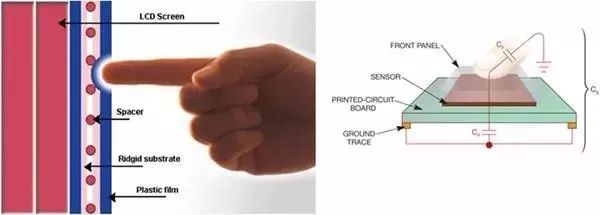
Do you still remember the button-operated “old phones” by Daming Lake?

It was nothing like today.
Now everyone has a touchscreen smartphone.
Whether elderly, children, office workers, or students…
Everyone has a touchscreen smartphone.
You can’t go anywhere without your phone.
Why did the old phones not respond to touch on the screen?
Do you know how the touchscreen of a smartphone works?
What is the difference between capacitive and resistive screens?

A touchscreen, also known as a touch panel, is a sensory LCD display device that can receive input signals from touch points. When a graphical button on the screen is touched, the tactile feedback system on the screen can drive various connected devices based on pre-programmed instructions, replacing mechanical button panels and creating vivid audio-visual effects through the LCD display.
Dr. Samuel Hurst invented a touch sensor in 1971, which was the prototype of the touchscreen. Three years later, he designed the first transparent touchscreen. By 1977, touchscreen technology had significantly improved and is still widely used and rapidly developing today.

Touchscreens are generally divided into two types:


The resistive touchscreen consists of a multilayer composite film, with a layer of glass or acrylic as the base, coated with a transparent conductive layer, which is then covered by a hardened, smooth, scratch-resistant plastic layer. Its inner surface is also coated with a conductive layer, with many tiny transparent isolation points separating the two conductive layers.
When a finger touches the screen, the normally insulated conductive layers make contact at the touch point, causing one conductive layer to connect to a 5V uniform voltage field in the Y-axis direction. This changes the voltage of the detection layer from zero to non-zero. The controller detects this connection, performs analog-to-digital conversion, and compares the obtained voltage value with 5V to determine the Y-axis coordinate of the touch point, and similarly determines the X-axis coordinate.


Capacitive touchscreens do not rely on finger pressure to detect coordinates by changing voltage values. Capacitive screens work through any charged object, including human skin (the charge carried by the human body). A capacitive touchscreen is made of materials like alloy or indium tin oxide (ITO), with charges stored in a fine electrostatic grid thinner than a hair. When a finger touches the screen, it absorbs a small amount of current from the contact point, causing a voltage drop at the corner electrodes, using the weak current induced by the human body to achieve touch functionality.
This is how our smartphone touchscreens work, but most of our current smartphones use capacitive touchscreens due to their lower error tolerance, making them more suitable for modern use.

For more exciting content, please follow the Zhangqiu Science Popularization Think Tank.

Science popularization in Zhangqiu, don’t miss out on the excitement.
